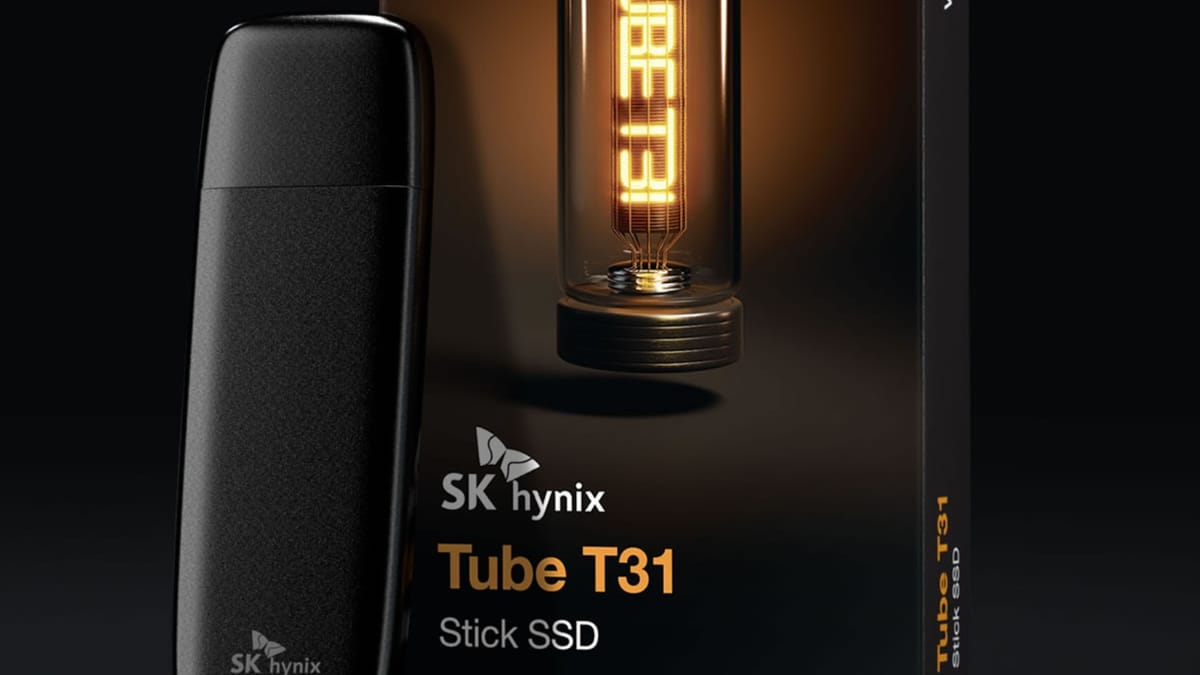
In review after review I’ve given the same advice – “stop using USB thumb drives”. There are far better solutions for moving files between devices that are faster and more reliable. Late last year we got our first device that might buck that trend – the SK Hynix Beetle. A USB-C drive, the Beetle proved to be a fast little beast, able to read and write at just over a gigabyte per second when using that interface. When using a USB-A connection that speed is cut in half, but that’s still significantly faster than just about any other USB-powered thumbdrive. Fast forward to today and SK Hynix is taking another bite at the apple with the SK Hynix Tube T31. Self-described as a “stick SSD”, could this be the true solution to the portable file problem? Let’s test and find out.
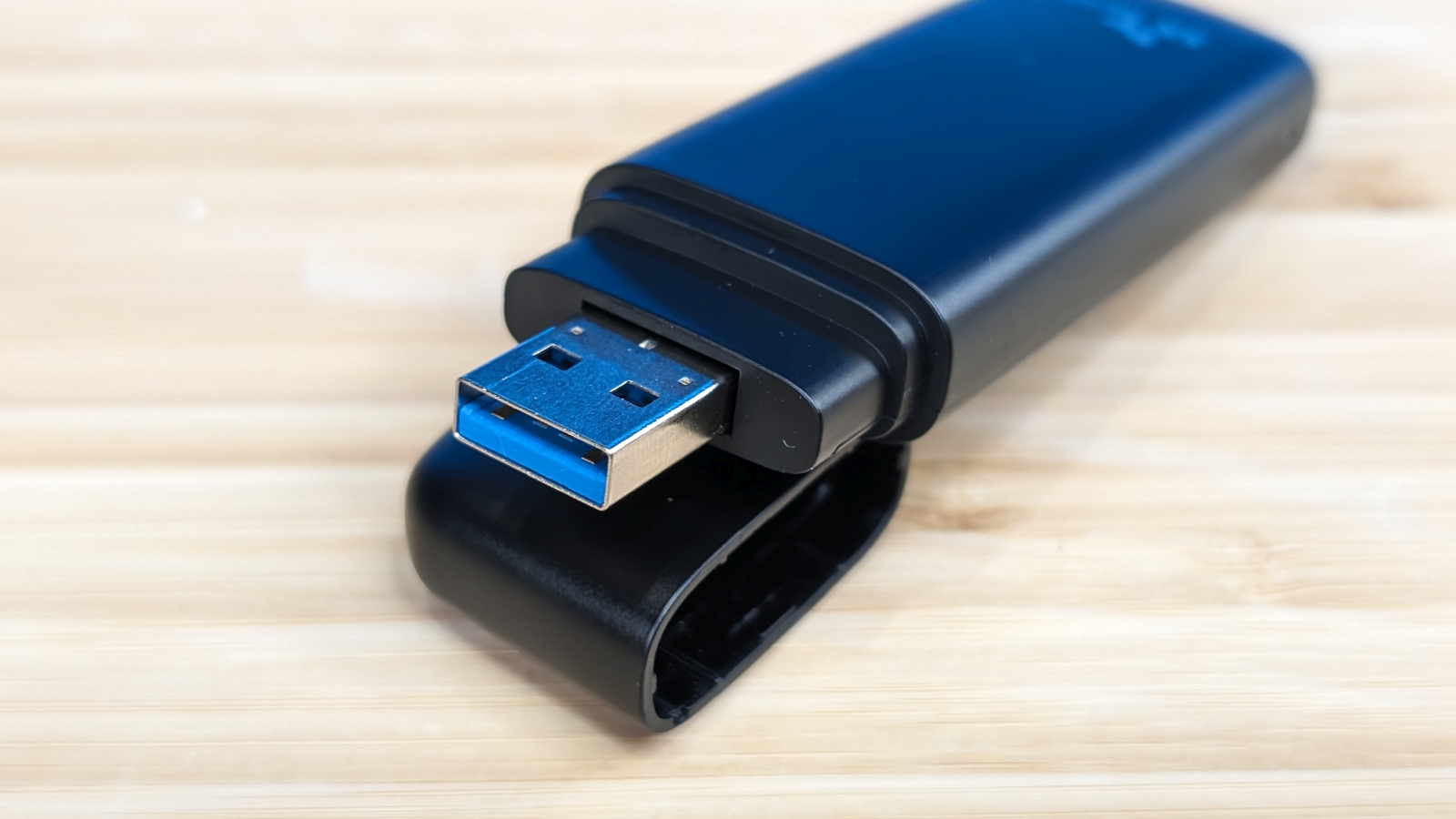
Before we turn to our usual suite of benchmarking utilities, let’s get under the tiny, tiny hood of the T31. Under the shell, you’ll find a 2242 M.2 NVMe SSD with a BC711 chip and a Jmicron JMS583 USB bridge controller. The interface is USB 3.2 Gen2, which is a 10 Gbps throughput. So it’s understood, 10 gigabits per second (Gbps) is equivalent to 1,250 megabytes per second as a theoretical maximum. When we look at the back of the box and it says “1000 MB/s read” and “1000 MB/s write”, that’s very close to the top end of that interface speed. We’ll see how it performs with synthetic and real-world testing in a moment, but it’s worth checking the math before you get rolling.
The footprint on the SK Hynix Tube is more akin to what you’d find with any other USB thumb drive. That is to say, it’s slim and will slip easily in your pocket. The Beetle also had a small form factor, but it was more rectangular in shape. If you want the exact specs, the Tube measures 3.64 x 1.20x 0.55 inches – just slightly larger than something you’d pick up from somebody like Sandisk. Rounding things out, the Tube weighs just 35 grams. Granted, a random thumb drive from my desk weighed in at 8.5 grams, but we aren’t talking about any real weight here.
The only real downside to the size of this drive is that it can be a bit bulky in your USB port, which can impede adjacent USB devices. It’s not a huge problem, but if you have two bulky devices next to each other, it might be a tight fit.
There’s nothing to configure as it’s truly plug-and-play. Into the port it goes, time to test: The first hits the theoretical maximums – Crystal Diskmark.
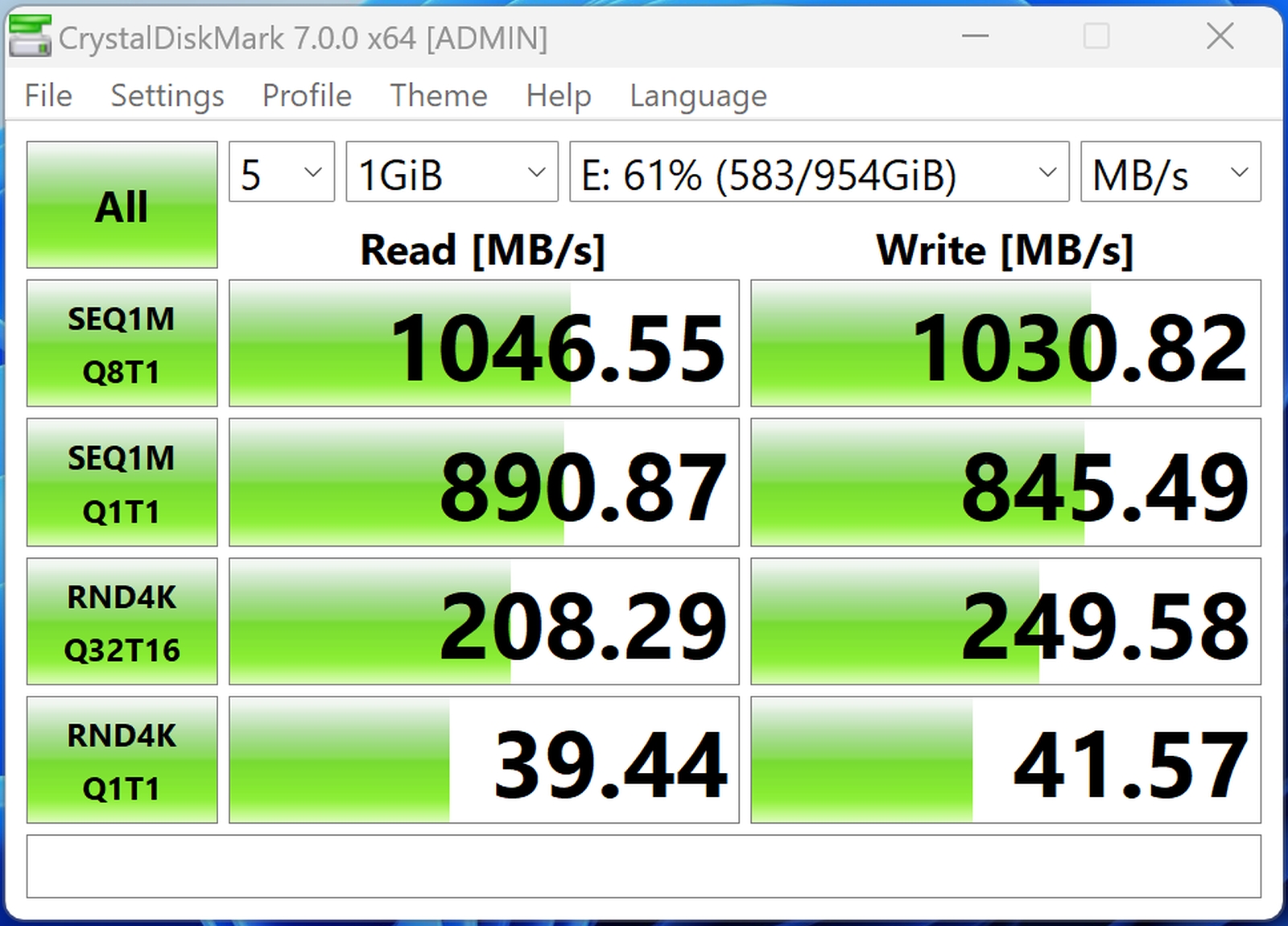
I also like to use ATTO as it shows a variety of block sizes. This shows a longitudinal view of the drive’s performance, accounting for the ramp-up time as well as an example of how small files in a row might appear slower.
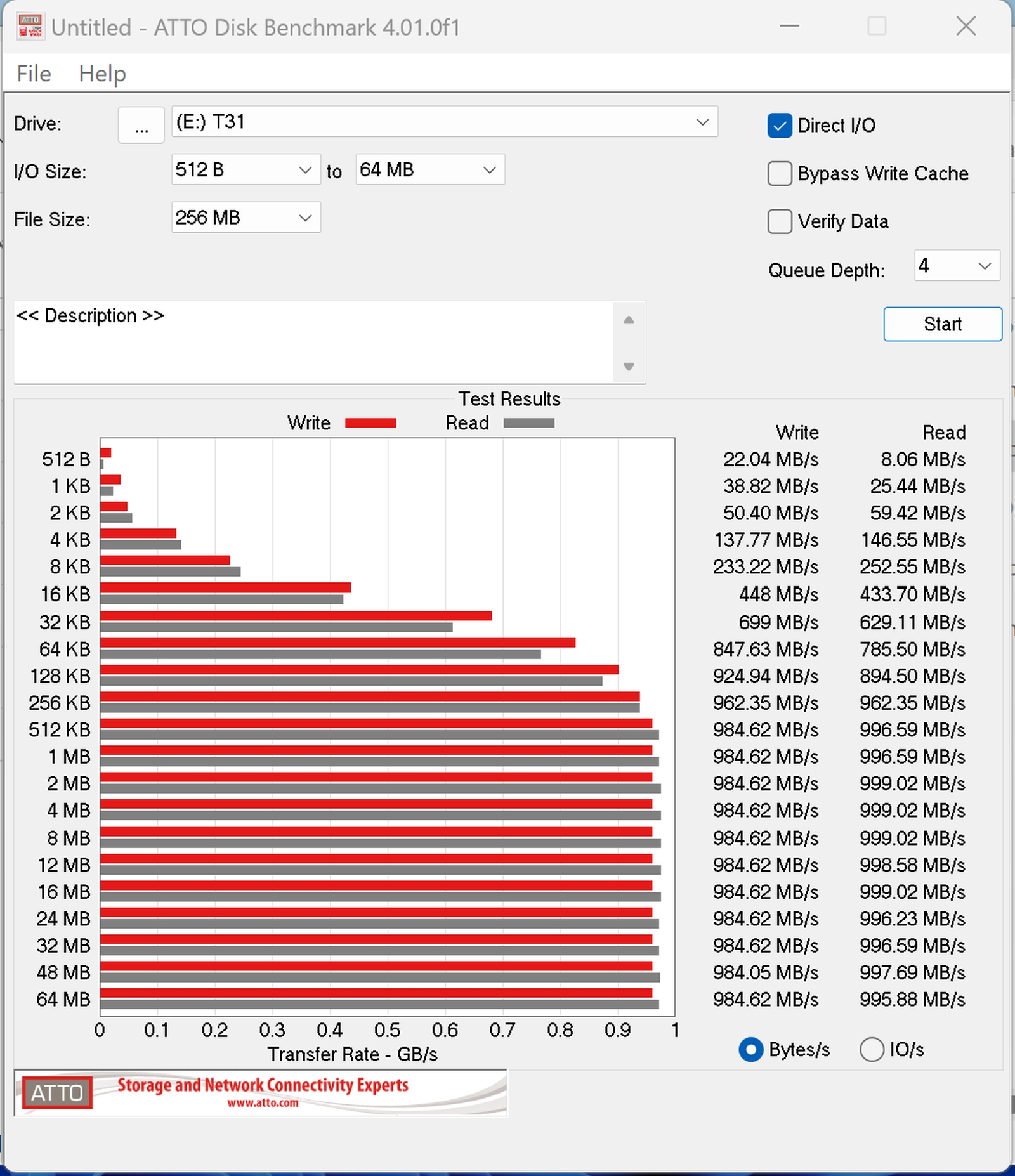
3DMark also has a benchmarking suite that’s meant to approximate real-world performance. I’m not sure I trust the numbers completely, but they do provide an aggregate snapshot, and more importantly, the average access times across a wide variety of file sizes.

One of the advertisements on the box might fly by unnoticed, but I’m going to call it out directly – “delivers consistent performance, even when full”. The challenge with many drives of this type is that they can take shortcuts that can trim overall capacity or speed as you approach full. Often this is compensated for by overbuilding the drive. If 80% full means a drop in speed by 10%, you simply add an extra 20% capacity to avoid it. Think of it as a “deadzone” on a thumbstick for a controller. By building in this slack, you can mask the problem. Here that’s entirely unnecessary. The T31, even at 99% capacity, did not vary in any way from the maximums we measured. Very, very few drives achieve this without sleight of hand, and that speaks volumes to SK Hynix and their commitment to engineering without compromise.
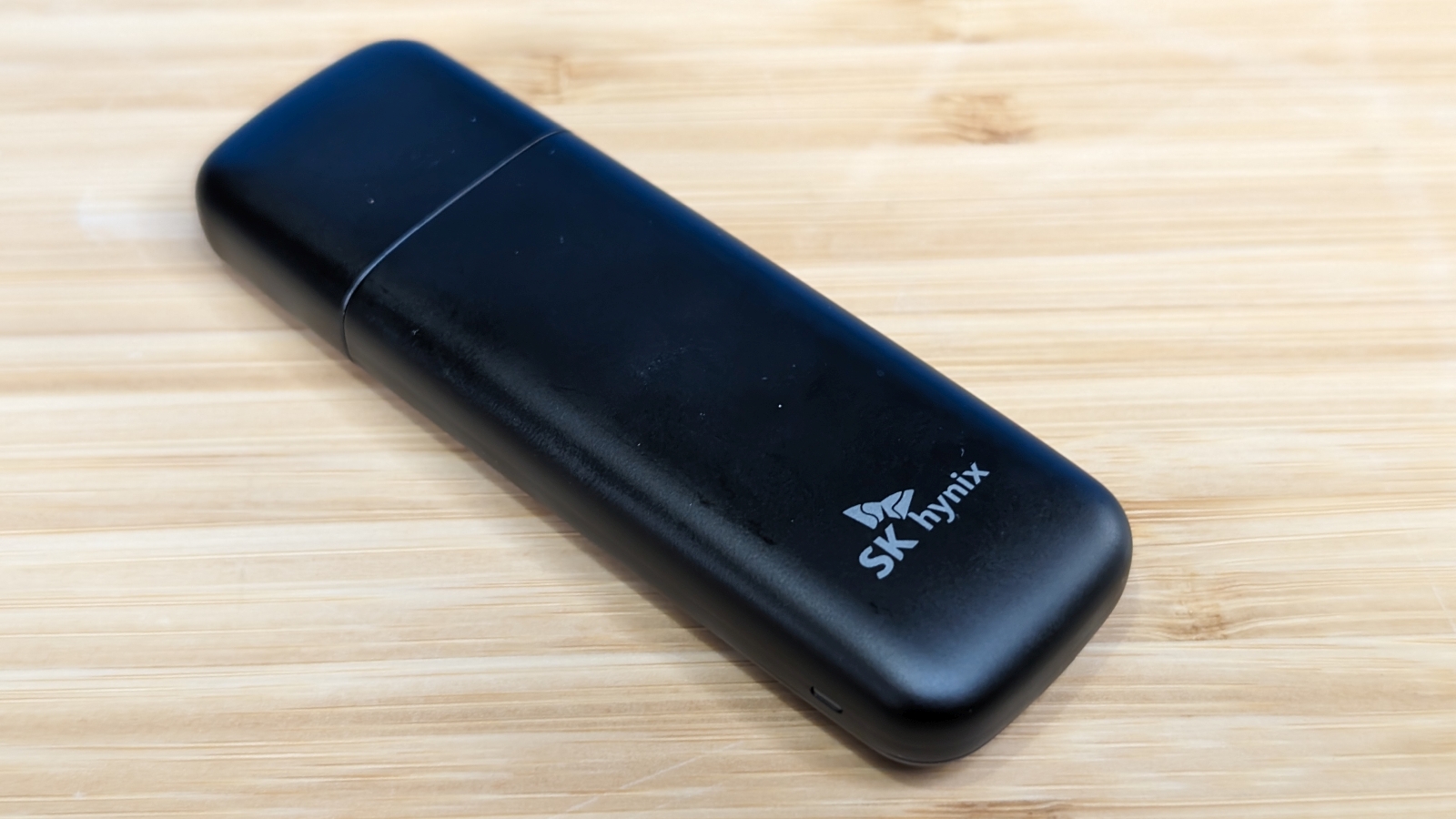
The last stop for all of our hardware reviews is always warranty and price. The SK Hynix Tube T31 comes in two capacities, 512 GB and 1 TB, and both carry a 3-year warranty. The 512 GB is $79.99 at the time of writing, with the 1TB version coming in at $99.99 — even cheaper when it goes on sale. Both are also warrantied to handle drops of up to 2 meters, which is just over 6.5 feet. To say that this little thing is armored is an understatement.
Ultimately the T31, just like the Beetle, is remarkably fast. Coupled with the price and the impressive warranty, it’s easy to recommend. Guess we can start using thumb drives again.
SK Hynix Tube T31 thumb drive
Excellent
While my assertion that people should stop using thumb drives still holds true for most instances, it’s nice to occasionally be proven wrong. The SK Hynix T31 delivers a full gig of read and write speed in the palm of your hand.
Pros
- Hits the advertised symmetric 1TB read / write
- 3 year warranty, and for drops up to 2m
- Reasonably priced in either capacity
- Zero degradation even when full
- Plug and play
Cons
- Size makes it a bit bulky in a USB slot
